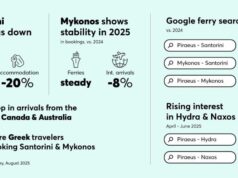 The Travel & Tourism industry in Russia is bigger than the size of automotive manufacturing industry and directly supports almost as many jobs as the financial sector.
The Travel & Tourism industry in Russia is bigger than the size of automotive manufacturing industry and directly supports almost as many jobs as the financial sector.
This is according to new research from the World Travel & Tourism Council (WTTC) sponsored by American Express and TUI AG, released today during a speech at the ‘Moscow International Travel Forum’ in Russia by David Scowsill, President & CEO of WTTC.
The research, undertaken by Oxford Economics, shows that Travel & Tourism’s total contribution to GDP in Russia was RUB3.4 trillion ($106 billion) in 2011, or 5.9% of total GDP which is larger than the GDP of automotive manufacturing, chemical manufacturing. This compares to 4.8% for automotive manufacturing, 2.9% communications services and 3.3% for chemicals.
Supporting 4 million direct, indirect and induced jobs, Travel & Tourism in Russia generates more employment than the chemical industry and nearly as many jobs as the financial services sector.
The new research also showed that Travel & Tourism’s contribution to GDP is growing faster than most other sectors in Russia. It will grow by an average of 4% per annum over the next ten years, a faster growth rate than the total economy.
It also highlights that Travel & Tourism is a significant source of export revenue for Russia.
In 2011, visitor exports totalled RUB517.2 billion ($16billion). This was 30% of all service exports and 3% of all exports including goods and services.
The study compared the effect of Travel & Tourism spending on GDP and the wider economy.
In Russia, RUB32 million ($1 million) in Travel & Tourism spending:
generates RUB48 million ($1.5 million) in GDP which is greater than all studied industry sectors
generates RUB6 million ($187,000) in the wholesale and retail sector
supports 53 jobs, which is more than the average of the economy (38 jobs), financial services (35 jobs), manufacturing (29 jobs) and chemicals (26 jobs)
David Scowsill, President & CEO, WTTC said: “These numbers are extremely significant. As a driver of economic recovery and growth in a very turbulent time, the industry stands apart for the sheer scale of its ability to create jobs and growth in every part of the globe and especially in Russia as shown by this study.
2013 is an important year for the Russian’s tourism industry as the country hosts the next T20 Tourism Ministers’ meeting and in the lead up to the Winter Olympics due to take place in Sochi in 2014, and of course the FIFA World Cup in 2018. It’s a great time for Russia to take notice of the Travel & Tourism industry as a generator of jobs and growth and ensure that sufficient investment and support is in place to ensure the success of these important events as well as the on-going growth of Russia’s Travel & Tourism.”
Bill Glenn, President Global Corporate Payments and Business Travel, American Express said: “With each release of regional data from the latest WTTC research, we continue to see the value that travel can bring to GDP, job creation and other economic factors. We are pleased to sponsor this research and provide the industry with another valuable asset to use to promote the benefits of travel.”
Dr Michael Frenzel, Chairman of the Executive Board, TUI AG, stated: “This research demonstrates the vast economic and social relevance of the Travel & Tourism industry in Russia, but also its potential. It is vital that the Government puts the industry alongside Russia’s traditional industrial base when considering long-term policies to create jobs, growth and economic prosperity.”
At WTTC’s Global Summit in Tokyo in April, WTTC’s research revealed that Travel & Tourism’s direct contribution to world GDP at US$2 trillion or 2.8% is more than double the GDP of automotive manufacturing and one-third larger than the global chemicals industry. Travel & Tourism generates roughly the same GDP as the global education and communications sectors, and about half that of the global banking and financial services industry.











